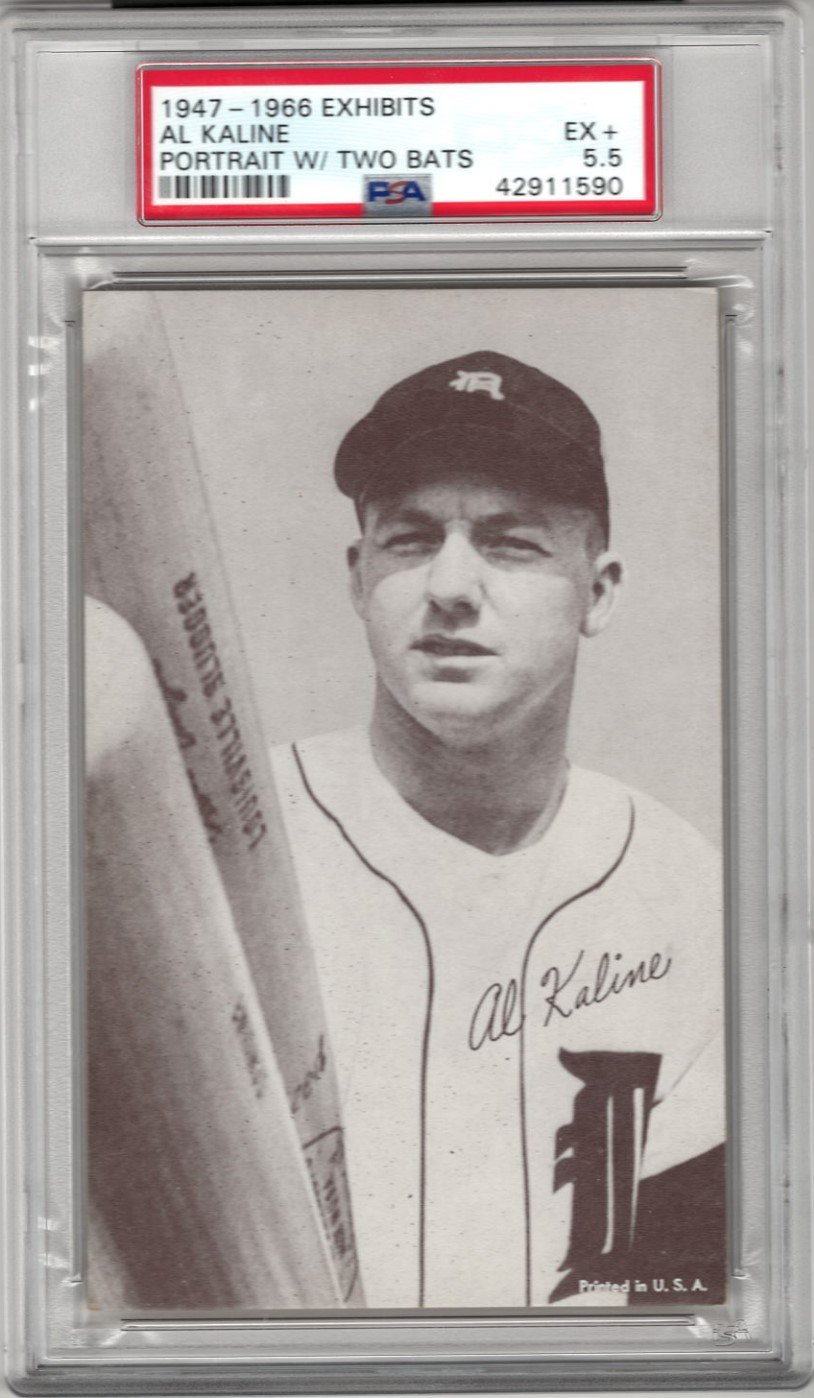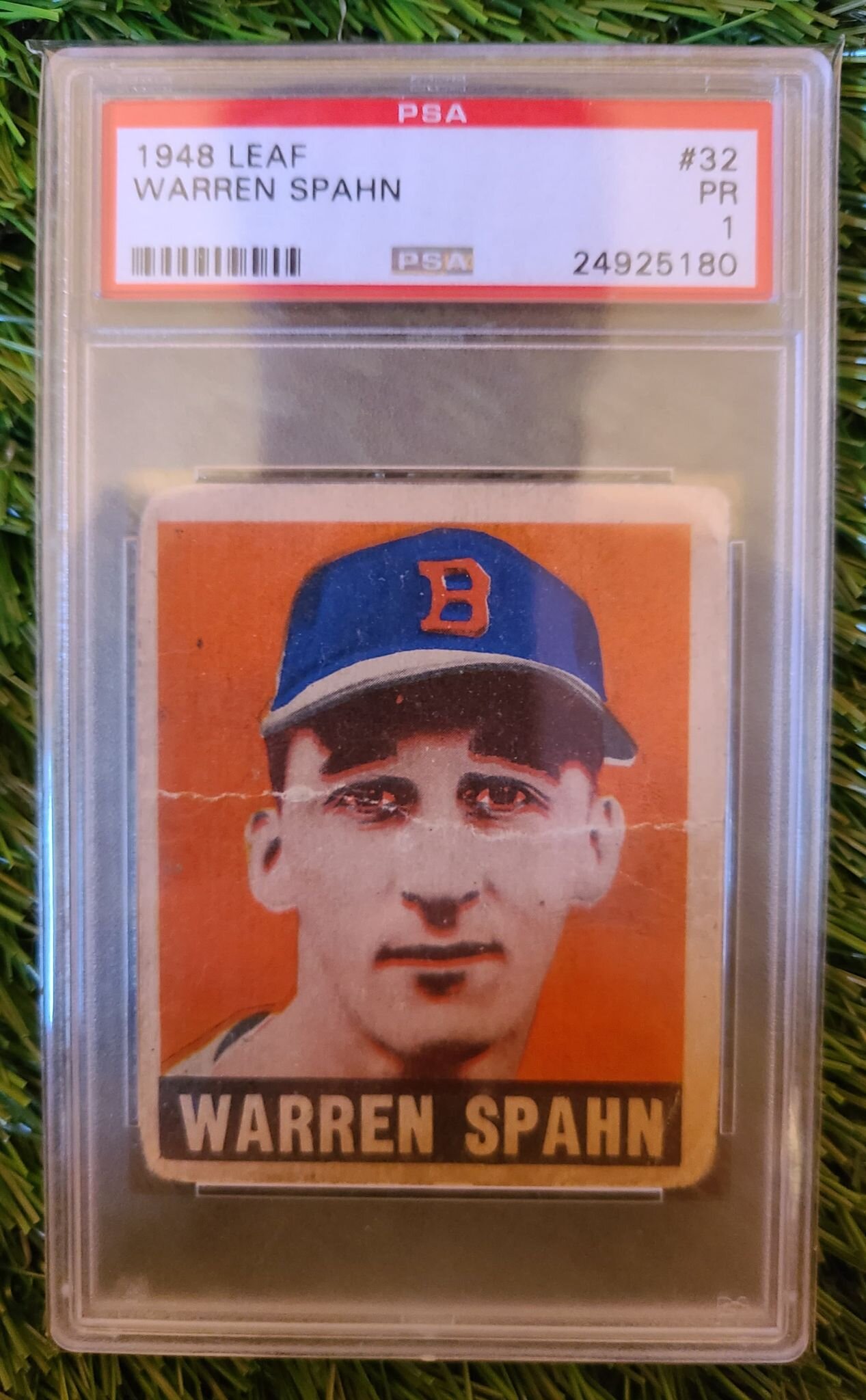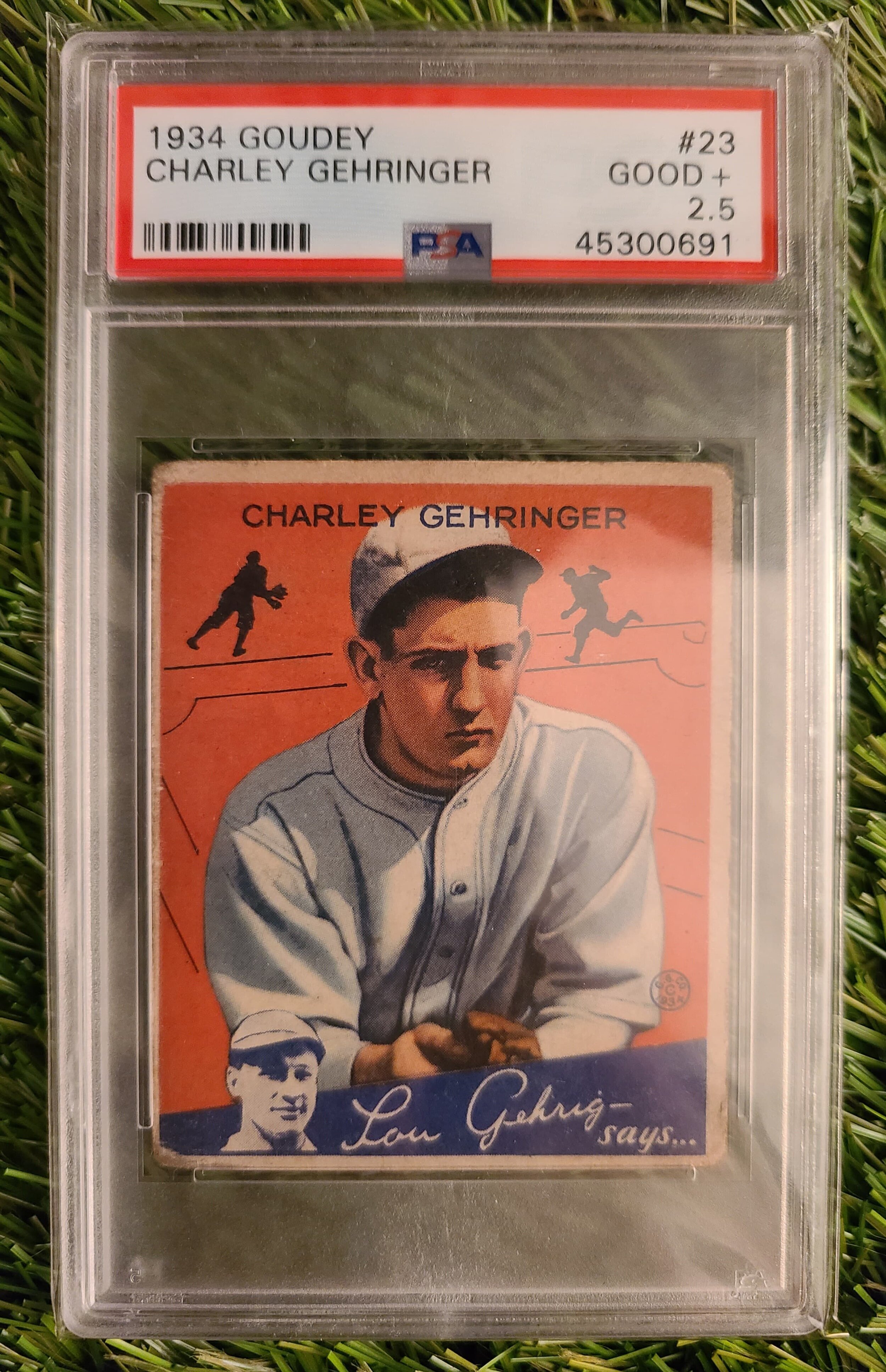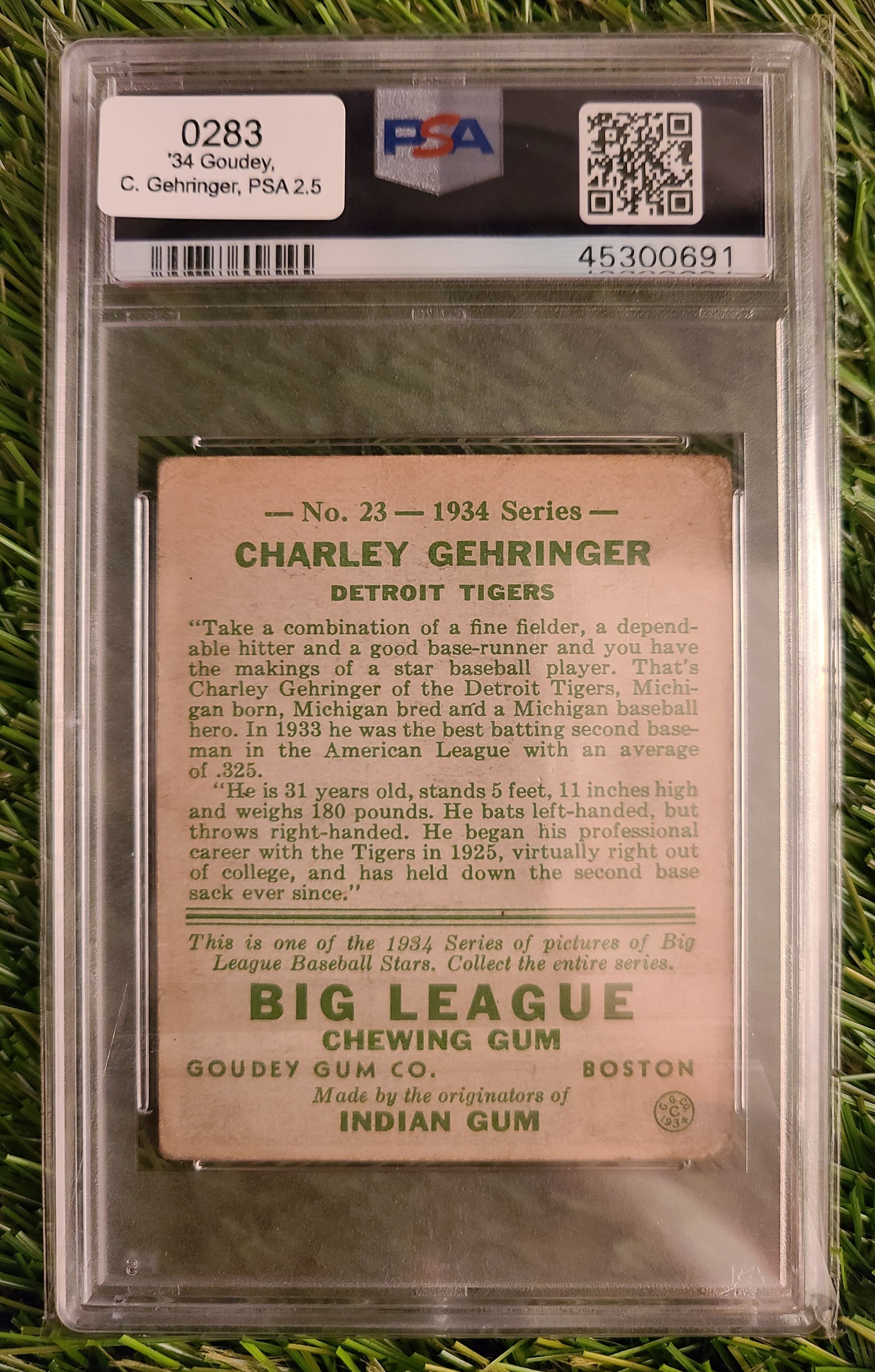Card Details:
Manufacturer: Bowman
Year: 1951
Card Number: 177
Paper: Cardstock
Size: 2 1/16” x 3 1/8”
Card Status: 12th Year
The Set:
The 1951 Bowman baseball Card Set consists of 324 cards that are color art reproductions of actual photos. The cards are slightly longer than the 1950 set, however, they maintain the same width. The set contains what many consider to be Mickey Mantles “true” rookie card along with the rookie cards of Willie Mays, Whitey Ford, Nellie Fox, and Monte Irvin with others sprinkled in.
Outside of the above-mentioned players who are in the Hall of Fame the set also contains cards for Hall of Famers Yogi Berra, Roy Campanella, Pee-Wee Reese, Duke Snider, Warren Spahn, Ted Williams, George Kell, Lary Doby and Enos Slaughter.
The 1951 set is the largest set produced by Bowman; with the 324-card size it is estimated that 85% of rostered players wound up with a card. There are 39 cards that utilize a horizontal orientation: most notably Mantle and Mays. There are also a few notable players that are missing within the set: Joe DiMaggio, Stan Musial and Jackie Robinson.
INTERESTING NOTE: Card No. 195 (Paul Richards) is the only card that is an original piece of art. It is believed that he obtained his manager position after the start of production, thus, leading to an original caricature on his card.
The Card:
This PSA 7 (NM) example of Charlie Keller comes from my personal collection. The 1951 Bowman card was the 9th of Keller’s career and was his third with Bowman (1949 & 1950). Keller is portrayed in a vertical player portrait with a beautiful ballpark as the backdrop. Keller can be found on the right side of the card depicted finishing his swing. Just above the ballpark backdrop is a vibrant blue sky filled with white clouds. His name can be found in all caps within a solid black caption box at belt level of his portrait. While there are zero indicators of his team or positional information on the front of the card, it can be seen that he was a member of the Detroit Tigers thanks to the bright orange Old English D on his navy blue ballcap.
When you flip the card over to reveal its back you will see a plain card stock with black and red texts. At the very top is the players name in bold red and all capitals and near the bottom the word “Baseball” in all capitals as well in bold red. The remaining text on the back is in black and gives Keller’s important measurables as well as a short paragraph about his years in the league and a short note about his time in the service (1944). You can also find the card number just above the red “baseball” following the format of “No. 177 in the 1951 SERIES.”
The Player:
Bat: Left Throw: Right
Height: 5’10” Weight: 190lbs
Debut: 22 April 1939 Final: 14 September 1952
DOB: 12 September 1916 Death: 23 May 1990
Keller had a 13-year playing career (11 with the New York Yankees and 2 with the Detroit Tigers) in Major League Baseball. He ended his career with a .286 BA and .410 OBP. Charlie missed the 1944 season (age 27) due to serving in the military during World War II. All said and done, Keller collected 1085 hits, hit 189 homeruns, scored 725 runs, drove in 760 runs, and ended his career with a 43.7 WAR and 152 OPS+. Keller also ended his career with 285 more walks than strikeouts, leading the Major Leagues with 106 base on balls in 1943; he collected 100+ walks in 6 different seasons.
Many accounts indicate that Keller was adored by Yankees fans during his 11 seasons in New York, but they also point out that he was not well received and often hated by opposing fanbases. This hatred likely came from the fact that he was a part of what many consider to be one of the best outfields of all time: Joe DiMaggio, Charlie Keller, and Tommy Henrich.
There are many people who believe Keller may have been elected in to the Hall of Fame if it weren’t for chronic back issues; of his 13 year career he managed to play 100 or more games in only 6 seasons, thus, hindering his ability to make it to Cooperstown.
After retiring from his playing career Keller was on the coaching staff of the New York Yankees during the 1957 and 1959 seasons. He would later go on to establish Yankeeland Farm at which he would breed horses and benefit from owning syndicated shares of multiple stallions.
INTERESTING NOTE: Keller’s career is often compared, in relation to similarity scores, to the first 9 seasons of Magglio Ordonez’s career.
Notable Achievements:
1937 MiLB Player of The Year (Newark Bears – International League)
5x AL All-Star (1940-41, 1943, & 1946-47)
AL OPS Leader (1943)
2x AL Base on Balls Leader (1940 & 1943)
20 HR Seasons: 5 (1940-43 & 1946)
30 HR Seasons: 3 (1941, 1943, & 1946)
100 RBI Seasons: 3 (1941-42, & 1946)
100 Runs Scored Seasons: 3 (1940-42)
4x World Series Champion: 1939, 1941, 1943, & 1949 with the New York Yankees (did not play in 1949 World Series)
Top-10 MVP Vote Getter (1941)
Population and Sales:
To date, there are 386 examples of Charlie Keller’s 1951 Bowman Baseball No. 177 graded by PSA. Of those 386 a total of 359 have a full grade, 24 have a half grade, and 3 have qualifiers. PSA has graded a total of 107,270 1951 Bowman Baseball cards, making Keller’s population a mere 0.35% of the total graded population. In relation to the PSA 7 grade, there are currently 88 examples with this grade, which is 24.5% of the 386 graded cards.
If we were to look at the SGC Grading population report in relation to 1951 Bowman, there are a total of 19,148 graded examples; 60 of which belong to Charlie Keller. Of these 60 examples 15 are graded an SGC (25%) and none are graded higher than an SGC 8.5.
According to Vintage Card Prices (VCP) prices range from $8.50 (PSA 3) all the way to $6,000 (PSA 10). The PSA 10 sale occurred back in May of 2008 via Mastro. The current VCP for a PSA 7 is only $31.49 with a low sale of $20.20 and a high sale of $53. In relation to SGC values VCP tells us prices range from $6 (SGC 1.5) to $13.99 (SGC 8). It is important to note that the value of an SGC 5.5 is listed as $29.99 which was sold on eBay in 2022 and there are no recoded sales after September of 2019 in relation to an SGC 8.
Work Cited
1951 Bowman Baseball Cards: A Colorful Milestone, www.psacard.com/articles/articleview/5858/1951-bowman-baseball-cards-colorful-milestone/. Accessed 24 Jan. 2024.
1951 Bowman Charlie Keller | PSA Cardfacts®, www.psacard.com/cardfacts/baseball-cards/1951-bowman/charlie-keller-177/22354. Accessed 24 Jan. 2024.
Baseball Almanac, Inc. “Charlie Keller Baseball Cards.” Baseball Almanac, www.baseball-almanac.com/players/cards.php?p=kellech01. Accessed 24 Jan. 2024.
Baseball Cards - 1951 Bowman | Psa Cardfacts®, www.psacard.com/cardfacts/baseball-cards/1951-bowman/148. Accessed 24 Jan. 2024.
The Cardboard Connection. “1951 Bowman Baseball Cards.” The Cardboard Connection, 2 Feb. 2021, www.cardboardconnection.com/1951-bowman-baseball-cards-2.
“Charlie Keller Stats, Height, Weight, Position, Rookie Status & More.” Baseball, www.baseball-reference.com/players/k/kellech01.shtml. Accessed 24 Jan. 2024.
“Charlie Keller.” Charlie Keller - BR Bullpen, www.baseball-reference.com/bullpen/Charlie_Keller. Accessed 24 Jan. 2024.
Guide, Baseball Card Value Price. “Charlie Keller.” 1951 Bowman Charlie Keller #177 Baseball - VCP Price Guide, vintagecardprices.com/card/baseball-card-values/1951-Bowman-Charlie-Keller-177/69796. Accessed 24 Jan. 2024.
Putman, Peter. Top Ten Complete Baseball Sets of All-Time, www.psacard.com/lists/top-10-baseball-card-complete-sets. Accessed 24 Jan. 2024.


























